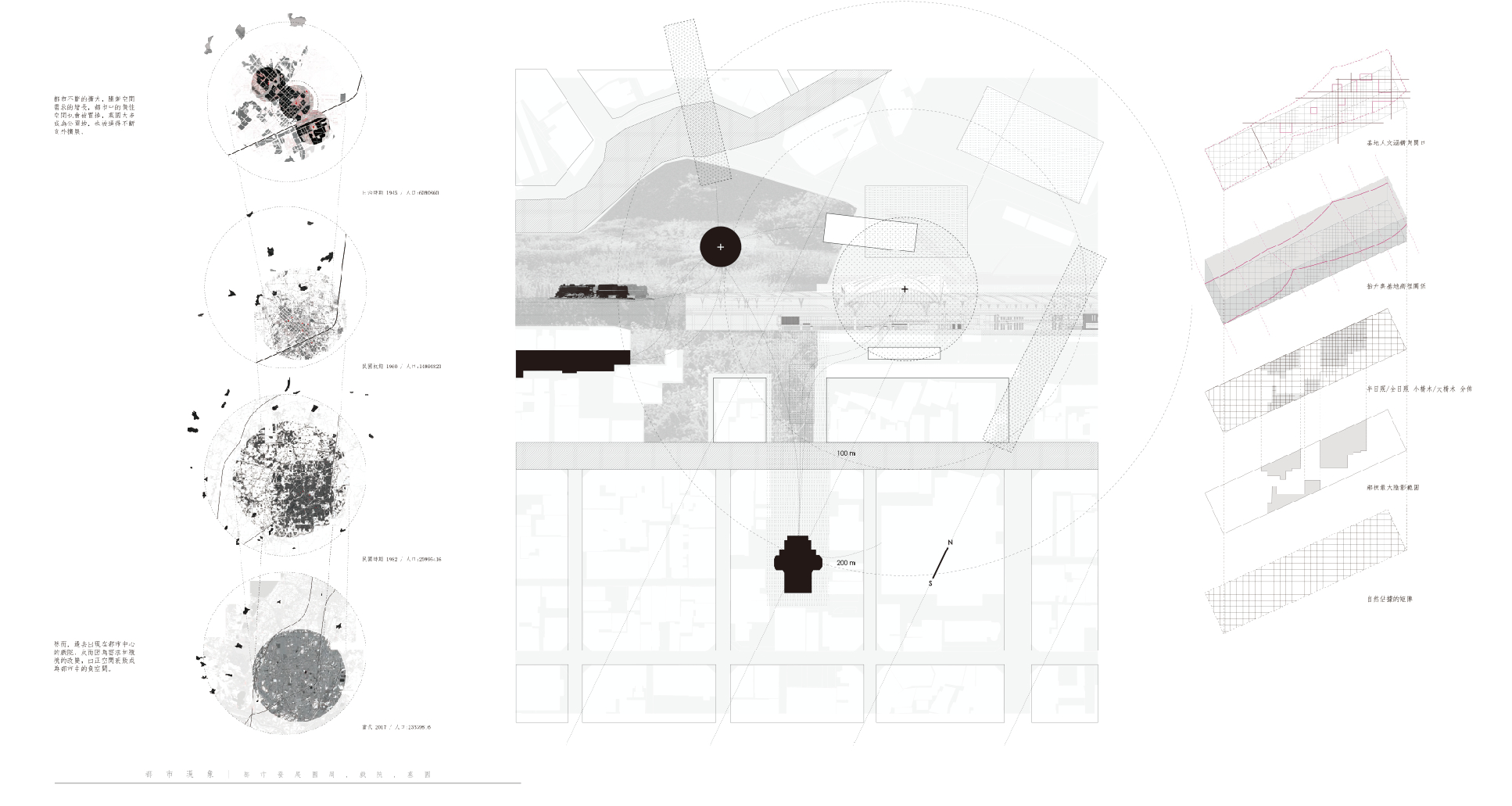














Forest of the Absences – A Landscape Cemeteryreality
台灣 / taiwan
詹承昕 / Cheng-Hsin Chan
莊子在《人間世》以櫟樹為隱喻,提出超越「有用」的概
念為「無用之用」,是一種隱性的存有與抵抗,而無用的佔
據形成留白。
以戲院作為閱讀都市的方法,衰敗廢棄的戲院成為都市中
留白的座標。墓園為負空間則被排擠到都市的邊緣,戲院
與墓園在「使用」的光譜兩端,也同是人們最重要的記憶
場所。
畢業設計討論無用的建築如何留白,並保有自身的抵抗力
來面對取代的現實。
Zhuangzi had a metaphor of an oak tree,expounded that the
using of the useless and the uselessness of the used. The
using of the useless is a concept of recessive being and
resistance,the uselessness occupied and became a vacant
space. Nature grows and dissipates, yet the endless nature
become useless occupation; The useless space go beyond
the time of use. simultaneously its beauty becomes eternity
and memory. By observing and mapping the transition and
the decay of the theaters in different periods of Taichung city,
the vacant spaces shaped after those theaters were
abandoned. On the other hand, cemetery as a negative
space generally appears at the edge of the city. Theater and
cemetery are at both ends of the “use”,but both o
are the most important place for people to memorize.
My thesis design is about how to keep a useless
vacant simultaneously give it a self resistance to face the place reality of replacement.
More Projects of this Session
展區其他作品
莊子在《人間世》以櫟樹為隱喻,提出超越「有用」的概
念為「無用之用」,是一種隱性的存有與抵抗,而無用的佔
據形成留白。
以戲院作為閱讀都市的方法,衰敗廢棄的戲院成為都市中
留白的座標。墓園為負空間則被排擠到都市的邊緣,戲院
與墓園在「使用」的光譜兩端,也同是人們最重要的記憶
場所。
畢業設計討論無用的建築如何留白,並保有自身的抵抗力
來面對取代的現實。
Zhuangzi had a metaphor of an oak tree,expounded that the
using of the useless and the uselessness of the used. The
using of the useless is a concept of recessive being and
resistance,the uselessness occupied and became a vacant
space. Nature grows and dissipates, yet the endless nature
become useless occupation; The useless space go beyond
the time of use. simultaneously its beauty becomes eternity
and memory. By observing and mapping the transition and
the decay of the theaters in different periods of Taichung city,
the vacant spaces shaped after those theaters were
abandoned. On the other hand, cemetery as a negative
space generally appears at the edge of the city. Theater and
cemetery are at both ends of the “use”,but both o
are the most important place for people to memorize.
My thesis design is about how to keep a useless
vacant simultaneously give it a self resistance to face the place reality of replacement.